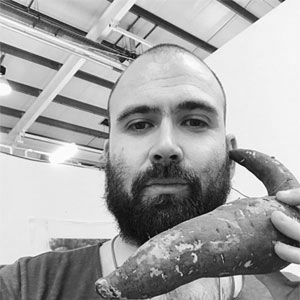
Rafael Pérez Evans
(Spain, 1983)
ARTISTIC RESEARCH RESIDENCY - FELIPAMANUELA
June 2018
Lives and works in London & Barcelona. He has a BFA from Goldsmiths University. His work has been exhibited internationally, with recent exhibitions including ‘Pavo Realengo’ Nogueras Blanchard Gallery, ‘Pararrayos’ Abierto Theredoom (Madrid), ‘Luz Negra’ Despina (Rio de Janeiro), ‘The Curse’ Queens (Marrakesh) and ‘Caldo de Cana’ Red S. (São Paulo). He was nominated for the Miquel Casablancas Award 2017 & 2018, Art Nou Prize (Barcelona) and ‘A Secas’ Museo C.A.A.C (Sevilla). He has completed residencies in Matadero (Madrid), Hangar (Barcelona), Red Studios (São Paulo) & Sassafrass (USA). Rafael has an interest in expanded pedagogies where formal and informal platforms for knowledge exchange are created and disseminated, he created Alto Residency in the jungle of Alto Paraiso (Brazil), was a co-founder of Art Lab Romita 26 (Mexico City), is part of the Gazua Project (Rio de Janeiro). He has been a visiting lecturer at University of Rochester (UK), Nottingham Trent University (UK) and is currently an associate lecturer at London College of Fashion (UK) and an MFA student at Goldsmiths University.His practice is associated with storylines, new historiographies and participatory sculpture, where testimonies, elements of craft, performance, and participation are intertwined providing a charged moment of encounter between the viewer and the historical tableaux he re-articulates. Rafael presents L’Doune an installation in Ranchito Matadero and an invitation into exorcising a gaze. Opening the charged territory of lense culture and its close relationship to colonial taxonomy, the ethnographer and some of his technologies are outed and placed in tandem with Shawafa practices (Moroccan Witchcraft). L’Doune is a divination technique utilised by Moroccan Shawafas where pieces of lead are molten and thrown in water creating abstract documents of a patient's history, these portraits contain many conflicts, secrets and resolutions of those who go seek help from the witches. The abstract lead pieces are only read by Moroccan Shawafas who can decode them, making them inaccessible to the etno-western hungry eye. The artist has borrowed this technique and creates a series of lead - portraits which are laid over a mirror that he has hand scratched with a metrological grid, instrument used by Eadweard Muybridge in his photographic enterprise and part of the many western colonial technologies of racialization. The grid calls us to dissect the object which lays over it, this time an imposible process without a Moroccan Shawafa mediator, the pain of others turns uncannibalisable. Gazing into the piece the audience is also invited to get their images temporarily caught in the mirror grid, turning them into visible agents in a historical net of othering.







